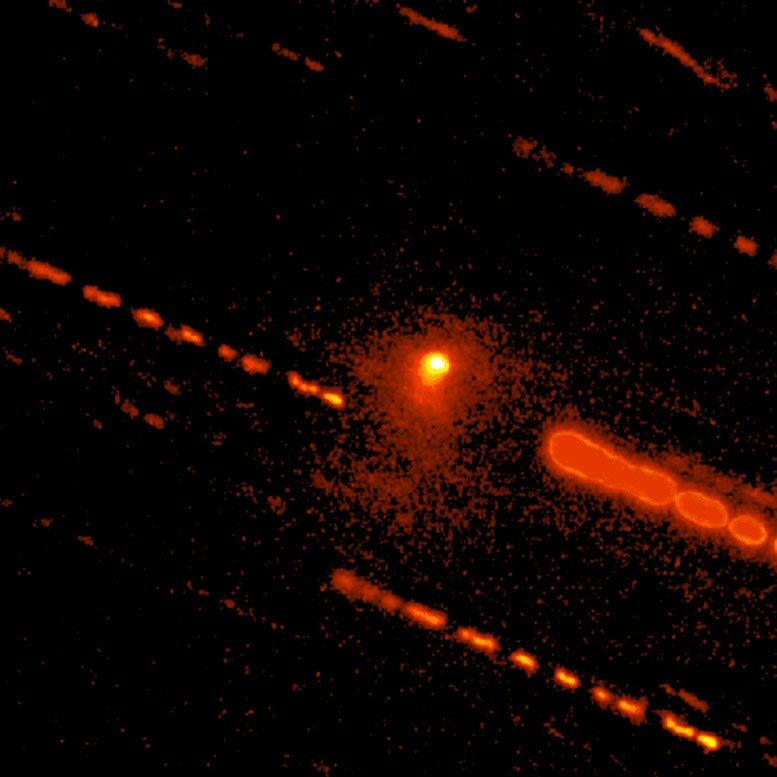Centaurs are minor planets believed to have originated in the Kuiper Belt in the outer solar system. They sometimes have comet-like features such as tails and comae—clouds of dust particles and gas—even though they orbit in a region between Jupiter and Neptune where it is too cold for water to readily sublimate, or transition, directly from a solid to a gas.
Only 18 active Centaurs have been discovered since 1927, and much about them is still poorly understood. Discovering activity on Centaurs is also observationally challenging because they are faint, telescope time-intensive and because they are rare.
A team of astronomers, led by doctoral student and Presidential Fellow Colin Chandler in Northern Arizona University’s Astronomy and Planetary Science PhD program, earlier this year announced their discovery of activity emanating from Centaur 2014 OG392, a planetary object first found in 2014. They published their findings in a paper in The Astrophysical Journal Letters, “Cometary Activity Discovered on a Distant Centaur: A Nonaqueous Sublimation Mechanism.” Chandler is the lead author, working with four NAU co-authors: graduate student Jay Kueny, associate professor Chad Trujillo, professor David Trilling and Ph.D. student William Oldroyd.
